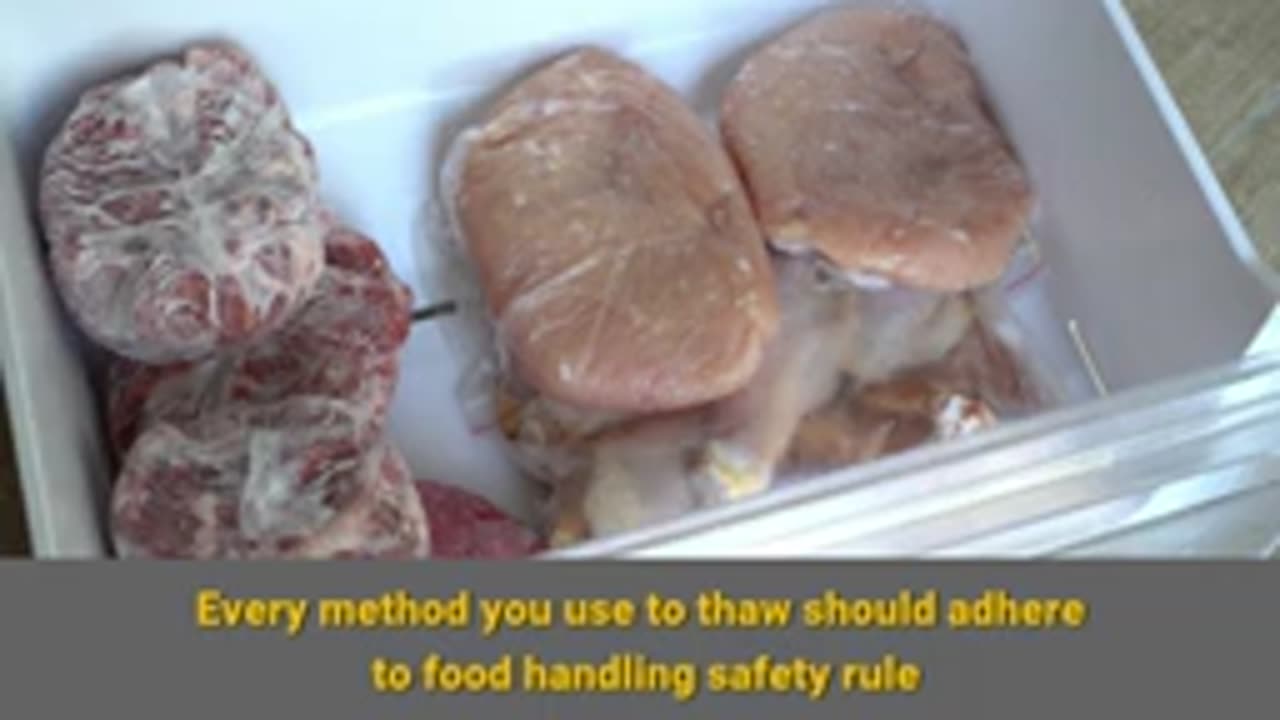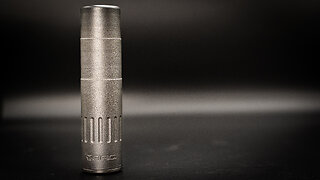Premium Only Content

HOW TO SAFELY DEFROST CHICKEN_2
Safely defrosting chicken is critical to preventing the growth of harmful bacteria. Here are **4 safe methods** for defrosting chicken:
---
### **1. Defrost in the Refrigerator (Safest Method)**
- **Steps**:
1. Place the chicken in a leak-proof container or a tray to catch any dripping juices.
2. Store it on the **bottom shelf** of the refrigerator to prevent cross-contamination.
3. Allow **24 hours** for every 2.5–3 pounds (1–1.5 kg) of chicken to defrost fully.
- **Why Safe?** This keeps the chicken at a safe temperature (below 40°F/4°C) throughout the process.
---
### **2. Defrost in Cold Water (Faster Method)**
- **Steps**:
1. Place the chicken in a sealed, leak-proof plastic bag.
2. Submerge the bag in a bowl or sink filled with **cold water**.
3. Change the water every **30 minutes** to keep it cold.
4. Chicken should thaw within **1–3 hours**, depending on size.
- **Why Safe?** Cold water prevents the outer layer from entering the "danger zone" (40°F–140°F or 4°C–60°C).
---
### **3. Defrost in the Microwave (Quickest Method)**
- **Steps**:
1. Remove any packaging and place the chicken on a microwave-safe plate.
2. Use the microwave's **defrost setting** (or 30% power).
3. Rotate and check the chicken frequently to ensure even thawing.
4. Cook the chicken **immediately after thawing**, as some parts may start to cook.
- **Why Safe?** Cooking immediately prevents bacteria from multiplying on partially thawed areas.
---
### **4. Cook Directly from Frozen (No Thawing Needed)**
- **Steps**:
1. Increase the cooking time by **50%** compared to fresh chicken.
2. Use a food thermometer to ensure the chicken reaches an internal temperature of **165°F (74°C)**.
- **Why Safe?** This method skips the thawing process entirely, avoiding potential risks.
---
### **Unsafe Methods to Avoid**:
- **Leaving chicken at room temperature**: Bacteria can grow rapidly in the "danger zone" (40°F–140°F).
- **Thawing in warm/hot water**: This unevenly warms the chicken, allowing bacteria to grow.
Would you like more details or tips for handling chicken safely?
-
 15:50
15:50
Degenerate Jay
1 day ago $1.49 earnedJames Bond Is Being Ruined By Amazon? Make Him A Black Gay Woman?
25.6K9 -
 15:18
15:18
DeVory Darkins
1 day ago $13.64 earnedTrump Drops NIGHTMARE Warning on Joe Biden
41.4K46 -
 36:13
36:13
The Why Files
1 month agoAlien Implants Vol. 1: Devil’s Den UFO Encounter: What Was Found Inside Terry Lovelace?
67.6K39 -
 9:03
9:03
Alabama Arsenal
1 day ago $0.48 earnedAAC HUB 2K | Modern Features, Iconic Classic Looks
9.7K1 -
 13:49
13:49
Dermatologist Dr. Dustin Portela
2 days ago $0.87 earnedDermatologist Reveals the Worst Things To Do To Your Skin
7.96K2 -
 1:02:24
1:02:24
PMG
1 day ago $0.22 earned"Hannah Faulkner and Jamie Villamor | DEFEND, INSPIRE, INFLUENCE"
6.56K -
 44:27
44:27
BIG NEM
15 hours agoWOULD YOU RATHER? Live Stream
4.46K -
 4:23:49
4:23:49
FreshandFit
17 hours agoIsrael v Palestine Debate! Respect A Man If He Says No Or Yes To A Girl's Trip?
201K224 -
 2:05:33
2:05:33
TheSaltyCracker
19 hours agoTech Bros try to Hijack MAGA ReeEEeE Stream 12-27-24
331K598 -
 2:01:25
2:01:25
Roseanne Barr
23 hours ago $50.16 earnedJeff Dye | The Roseanne Barr Podcast #80
154K73